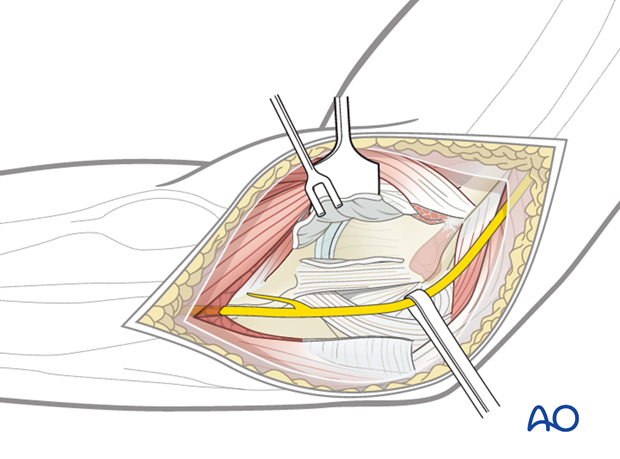Medial approach to the proximal forearm: FCU split
1. Introduction
In contrast to the Hotchkiss approach, the FCU split provides a better access to the anteromedial facet of the coronoid, the sublime tubercle, and the medial collateral ligament.
2. Medial approaches
The interval that splits the flexor pronator mass and elevates the anterior part (pronator teres (PT), flexor carpi radialis (FCR), and palmaris longus (PL)) along with brachialis from the anterior elbow capsule gives good access to the anterior elbow capsule and the tip of the coronoid also known as the Hotchkiss “over the top” approach (1). The access to the medial facet of the coronoid is limited and there is also poor access to the base of the coronoid.
For access to the medial facet, use the interval where the ulnar nerve lies between the heads of the flexor carpi ulnaris (FCU split; 2).
For access to the base consider elevating the entire flexor-pronator mass from posterior to anterior (Taylor and Scham; 3).
In the following the FCU split is described.
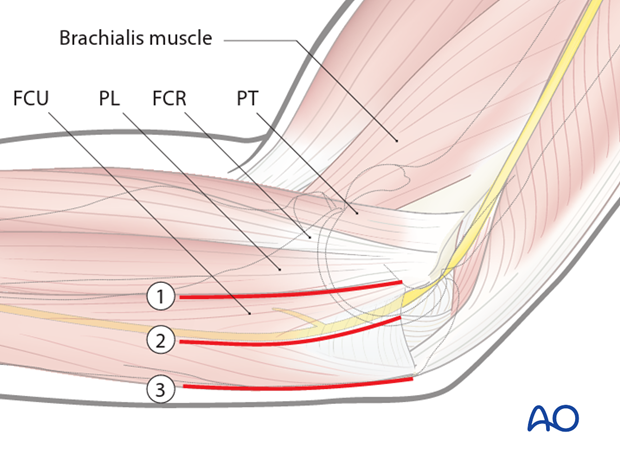
Skin incision
The skin incision can either be posterior with a medial skin flap or direct medial, taking care to protect the posterior branches of the medial antebrachial cutaneous nerve.
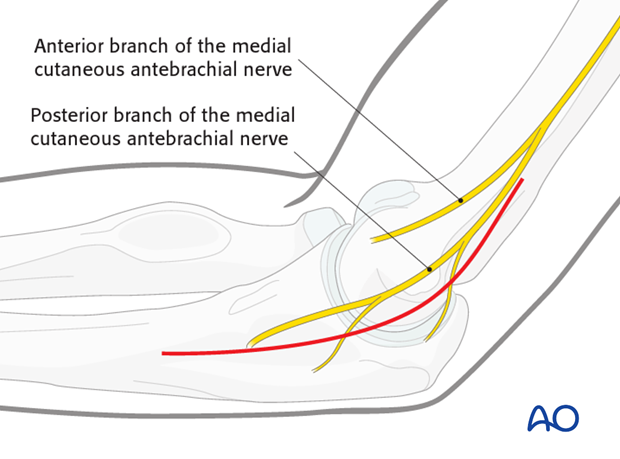
Ulnar nerve
The ulnar nerve should be identified and protected. Generally, it is unroofed for 6 centimeters proximal and distal to the epicondyle. Consider anterior subcutaneous transposition if you think this will keep the nerve safer.
Pearl: Always start with the exposure of the ulnar nerve proximally as it is easier and safer.
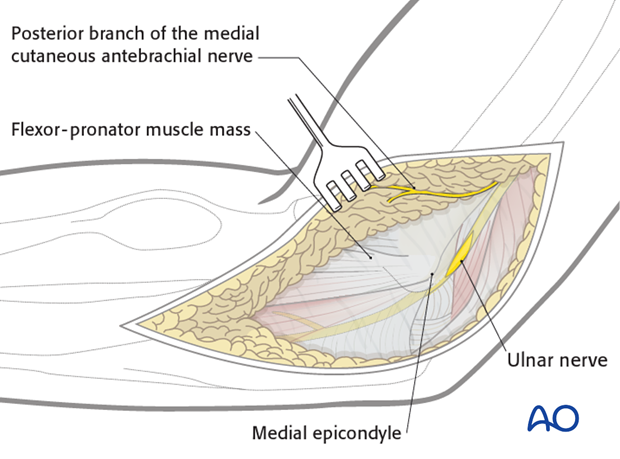
Follow the ulnar nerve distally as it goes under the fascia between the two heads of the flexor carpi ulnaris (FCU). Incise it with a pair of scissors and protective the first motor branch running to the humeral part of the FCU.
Pearl: Small, bleeding vessels can be best coagulated by using a bipolar coagulation pincette to protect the ulnar nerve.
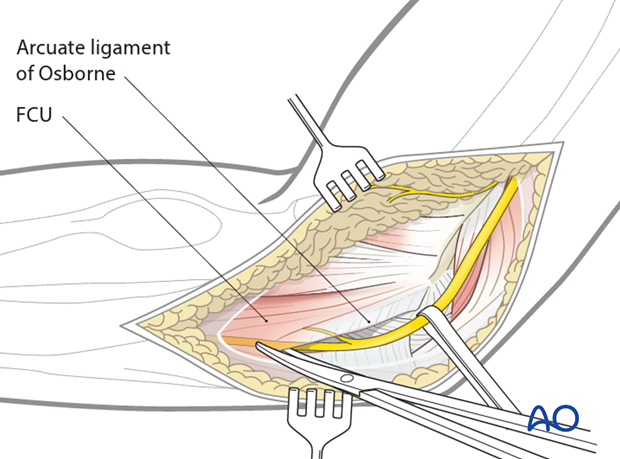
Splitting the FCU
Use the course of the ulnar nerve to distinguish the humeral and the ulnar part of the FCU. Start the dissection distally and elevate the humeral part of the FCU extra-periosteally off the coronoid, medial collateral ligament (MCL), and anterior elbow capsule. The MCL travels from the medial epicondyle to the sublime tubercle which is usually palpable.

For better exposure to the medial coronoid, the exposure can be extended distally and proximally. Distally one can split the FCU further down. Proximally one can extend the dissection by sharp, subperiosteal elevation of the flexor-pronator mass off the medial supracondylar ridge of the distal humerus, although this is not usually necessary.
Both, the brachial muscle and the flexor-pronator mass can be elevated off the anterior joint capsule.
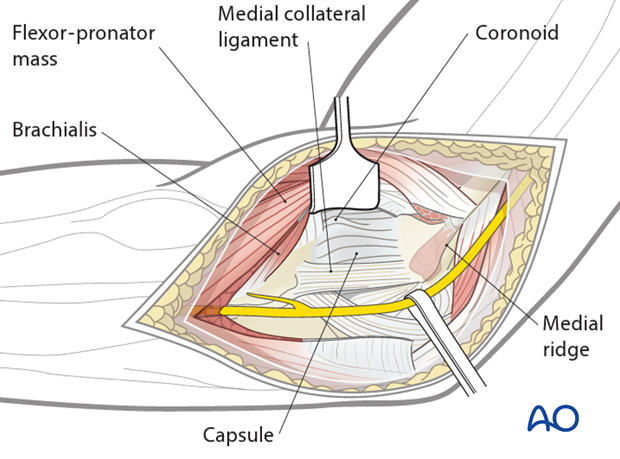
Capsulotomy
The elbow joint can further be opened with an anterior capsulotomy.
